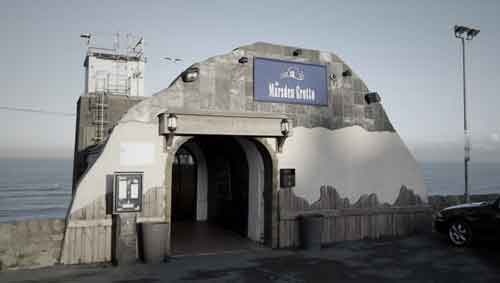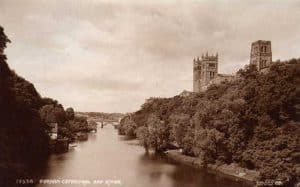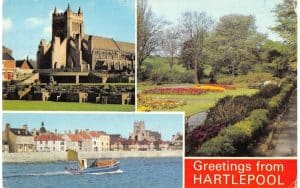The coast from the Tyne to the Tees has a long tradition of sea-faring and industry, with a spooky tale or two thrown in for good measure. LEE D. MUNRO reports…
Tynemouth Priory and Castle
A black monk, a pirate’s loot, and demon fairies – what more could you ask for?
The foundations of the priory are thought to date back to the 7th century, while the stone castle which surrounds it is thought to date back to
Olaf was a Viking, taken in by the priory monks when injured. After being nursed back to health he joined the monastery. During a later Viking
However, according to an article by the Faery Folklorist, the inhabitants of the cave were demon-like entities, though the cave still harboured treasure.
Marsden Grotto
Marsden Grotto is situated within the cliff face opposite Marsden Rock, South Shields. Originally a small cave, a lead miner named Jack Bates used explosives to enlarge it and set up home there. This earned home the name Jack the Blaster.

The Grotto has many a tale of smugglers associated with it, indeed many of the ghostly tales seem to stem from their nefarious activities – namely murdering each other. The location is a favourite haunt of ghosthunters and accounts of ghostly phenomena are numerous. Apparitions, unexplained voices and noises, feelings of being touched and poltergeist activity are all said to take place here.
The Grotto is a bar and restaurant, so you can stop by for a beer, a bite to eat and maybe an otherworldly patron.
Souter Lighthouse, Marsden
Almost next door to Marsden Grotto and also in the village of Marsden is Souter Lighthouse. Opened in 1871 the lighthouse was finally decommissioned in 1988.
The stories associated with the lighthouse are rather vague, both in origin and content. The figure of a man has reportedly been seen on occasion, phantoms scents and poltergeist-type activity have said to have occurred.
It has been a location for many ghost hunts, especially since making an appearance on Most Haunted.
As you can imagine given the proximity to Marsden Grotto and the nature of the location, suggested causes for the reported phenomenon have been former lighthouse-keepers, smugglers, and even Grace Darling’s niece.
The Jolly Sailor, Whitburn
The Jolly Sailor is a pub in Whitburn, a village on the coast just north of Sunderland. Apparently home to a Green Lady, This female spectre is said to be another lovelorn lady. Unrequited with her lover she appears destined to roam the pub in her green dress eternally pining. (Note to self: Don’t fall in love, not that I’m a woman, but still, why take the chance). The vision is also accompanied by various noises and slamming doors.
Further investigations by groups have also turned up a nurse, and First World War soldier and an unnamed male. You can place your own stock in that as you see fit.
By all accounts a very welcoming pub with a decent pint, you could always call in and get the stories first hand.
Heugh Gun Battery, Hartlepool
Originally constructed in 1860, the battery was one of three designed to defend the growing port of Hartlepool. In December 1914 the city was fired upon by German battle cruisers causing much damage and loss of life.
Consequently, the battery was the only one in the UK to engage the enemy during the WWI.
The ghostly stories here seem to stem from renovations at the site after its closure. A new beginning meant a new opportunity for ghost events and ghost walks. So if the provenance of ghost tales and an interest in military history floats your boat, make a bee-line for the battery.
A native of Newcastle, LEE D. MUNRO is Spooky Isles’ correspondent for North East England. He has has a deep interest in researching and writing about anomalous experiences and phenomena. As a member of Otherworld North East Research Society he is also actively involved with investigating in Tyne & Wear, Northumberland and County Durham. Follow him on Twitter @L_D_Munro or visit the OWNE site







1 thought on “England’s North-East Coast: 5 Haunted Places to Visit”